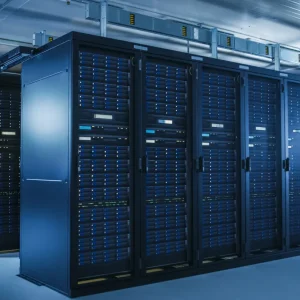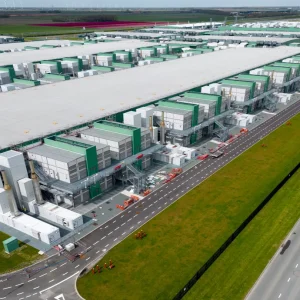
Collocation providers are being faced with an ever-growing demand for services, which consume more and more power.
Sitting with CBR, Simon Brady, EMEA optimisation program manager at Emerson Network Power said that retrofitting is a viable way for data centres to adapt to a data driven world.
"New data centres tend to be built with power maximisation in mind. However, there is significant amount of underutilised facilities out there that can benefit from an optimisation MOT [MOT is a data centre certification programme launched by the Data Centre Alliance in 2013].
"It is alarming how many brand new data centres would benefit from a finely tuned service that optimises the load that they are carrying."
In the past, many data centres were built to meet a kW per m2 specification, but the data centre loads of today rarely conform to such a design.
"The most efficient data centres, such as the ones owned by Facebook and Google, are built to perfectly match their IT loads. In turn, they can achieve optimum PUE ratings from their equipment."
Power usage effectiveness (PUE) measures a site’s energy efficiency. To get a facility’s PUE value, operators divide the amount of power entering a data centre by the power used to run the computer infrastructure within it.
Having a power usage effectiveness (PUE) of 1.0 is ideal, but must data centres are far from that with their legacy systems. Any site that sits on 1.2 and/or below is deemed as ‘very efficient’.
Brady said: "Most customers can significantly improve their existing PUE level by engaging a dedicated optimisation team. To get the most from a data centre, it is important for an optimisation expert to visit customer sites on a regular basis to provide practical advice, help reduce PUE and increase efficiencies.
"For many visits by these experts, this involves making simple changes to existing equipment or tuning what they already have."
Retrofitting a facility is not just about the power as it can go through all other verticals of the data centre including cooling, infrastructure and so on.
Go green to win
The major commercial and enterprise players in the industry have unveiled their plans to adopt renewable energy; this is, according to Brady, a turning point in the data centre space.
He said: "Every person, business and industry should be looking to adopt green energy, not just data centres.
"It is important to understand that it is not just where your energy comes from, but how efficiently that energy is used over time. After all, what is the point of a data centre sourcing all of its energy from a carbon neutral source when they waste 20% of that energy?"
Brady also said that it is clear that energy usage, in any part of the data centre, is something customers are focused on reducing wherever and whenever they can.
"At the front of their minds is meeting the EU’s ambitious renewable energy directive that aims for 20% of final energy consumption to be from renewable sources by 2020.
"However, a single product is unlikely to revolutionise the data centre space. A real revolution starts with looking at data centre facilities as one complete system."






